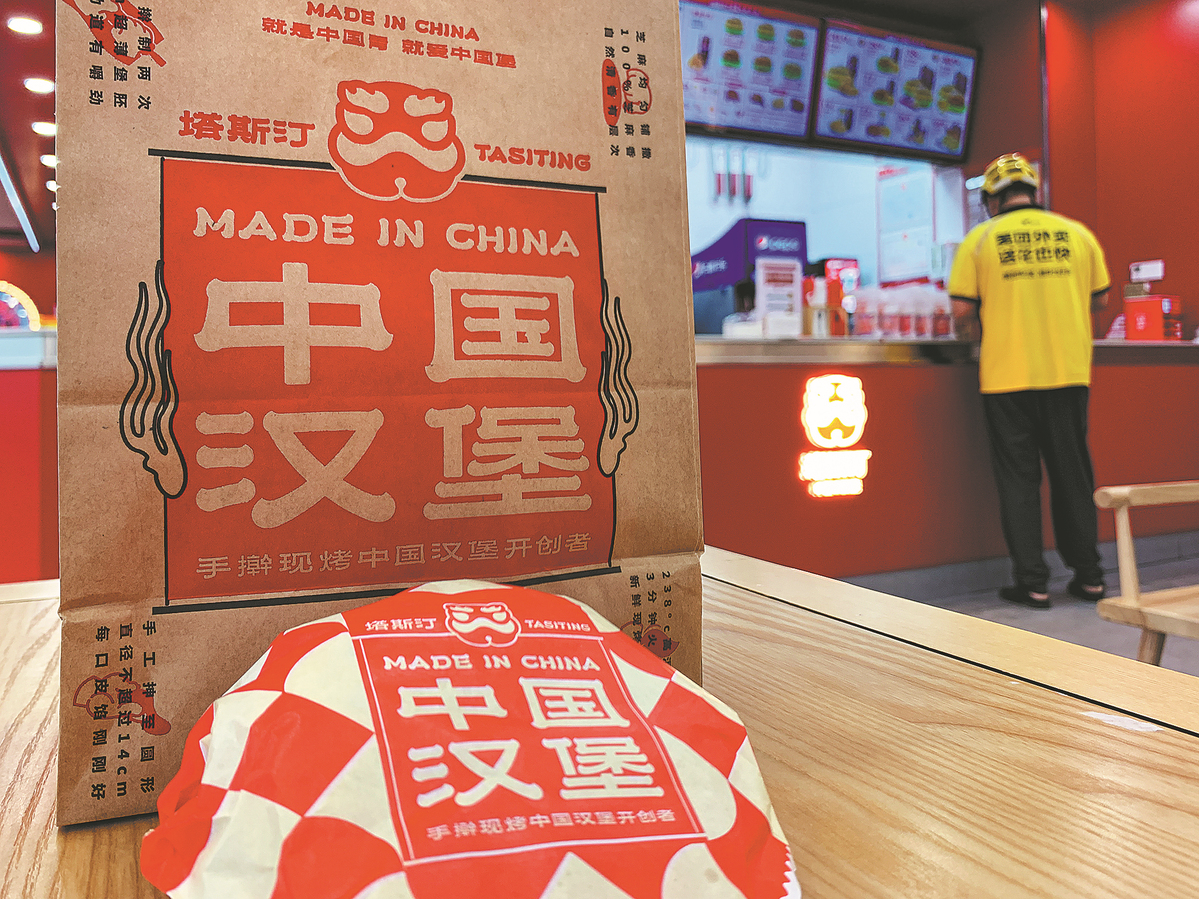

Culinary heritage
This trend reflects a growing appetite among young consumers for fast food that incorporates Chinese culinary traditions and ingredients, driven by a renewed interest in cultural heritage.
Tastien, in particular, embraces Chinese cultural elements not only in its menu, but also in its branding and store design, combining traditional motifs with a modern aesthetic.
During the Spring Festival, Tastien teamed up with reality show National Treasure to introduce a special "Treasure Basin" set meal. Inspired by a lacquered carved box, an item once used by royalty for storing valuables or food, the meal symbolizes wealth and prosperity.
On Tastien's official WeChat account, it collected ideas for co-branding from netizens, with posters hoping it could collaborate with the Palace Museum and domestic comics like The Grandmaster of Demonic Cultivation to promote traditional culture.
Meanwhile, even Western fast food chains in China are weaving Chinese cuisine into their offerings, from youtiao (deep-fried dough sticks), tea eggs and porridge at KFC to pickled vegetable and bamboo-shoot chicken porridge and soy milk at McDonald's, highlighting a wider trend of cultural fusion in the fast-food industry.
Chen Yong, an associate professor at EHL Hospitality Business School in Switzerland who focuses on tourism and hospitality marketing and economics, sees the fast-food industry's quick service, efficiency, and affordability as key to its high customer return rate. For fast-food chains, this means expanding their presence with more outlets is essential for accessibility, Chen said.
He also views China's vast catering market as ripe with opportunities for Chinese fast-food brands, especially since Western fast food has already paved the way for demand among Chinese consumers.
A January report by the World Federation of Chinese Catering Industry highlighted that young people, particularly students and young professionals aged between 18 and 24, are the backbone of food consumption, valuing cost-effectiveness and convenience above all.
This demographic is also the primary customer base for fast food, influenced by their income, expenditure, and a preference for a fast-paced lifestyle encouraged by short-video platforms, Chen said.
Lao Xiang Ji, a chain with over 1,000 locations nationwide, is rapidly expanding to meet the demands of these young consumers. Known for its quick-serve chicken dishes, Lao Xiang Ji has tapped into health trends by collaborating with Boohee Health to launch a fat-reduced menu, in line with the popularity of the movie You Only Live Once and a growing consumer preference for low-calorie options.
They've even introduced a "Nutritionist Recommended" section on their mini app, complete with calorie counts for each dish. This initiative has been well received online, with social media users launching challenges like the "14-Day Lao Xiang Ji Eating Challenge".
Chen believes that for Chinese fast-food chains to continue growing and to compete with Western fast food, they must maintain their price advantage, ensure the quality of their dishes, and gradually increase their coverage area.
China's domestic fast-food brands are relatively young, he said. "Chinese entrepreneurs should have a vision to ensure their Chinese fast-food brands still exist 20 to 30 years from now," Chen said. "These emerging brands should strive to explore business models, products, and services that are better than their competitors."
Chen hopes that Chinese catering brands consider the global market in their development plans for the future. "Chinese culinary culture is among the best in the world. Foreign tourists who come to China and want to try Chinese food would also be willing to try Chinese fast food," Chen said. "By providing good products and services, coupled with the advantage of pricing, we can also offer a great experience for foreign tourists."